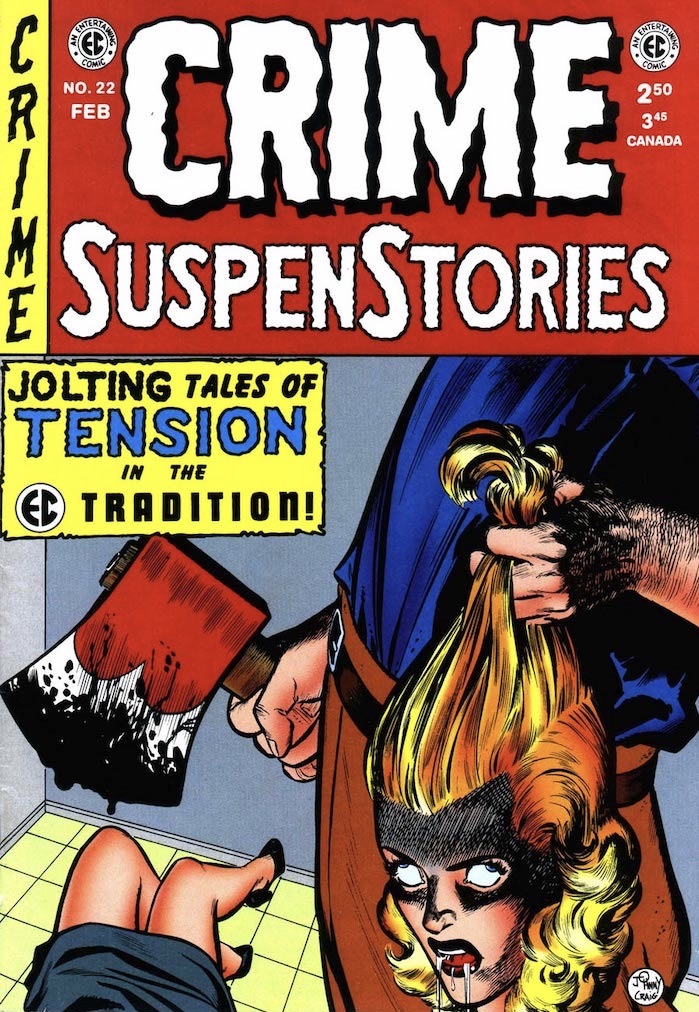No comic book company, before or since, has maintained such a high standard of graphic excellence as EC - and the horror comics boasted some of the best artists even within EC. Jack Davis' southern-fried Bigfoot style routinely curdled laughter into terror; Graham Ingels' putrescent detail gave a tactile impact to his tales of ghouls and decomposing corpses; and Johnny Craig (who also wrote many of his own stories, and took over the editorial reins on Vault of Horror) trumped them all by presenting the most awful occurrences in such clean and tidy strokes that the horror seemed to leak out between the panels. (As a result, a Craig axe-in-the-head panel seemed to carry more of a jolt than any graphic disembowlment from the pen of his peers.) Reed Crandall, George Evan, and even the maligned Jack Kamen, while not as distinctive, ensure that no EC horror story was drawn with anything less than superlative skill, and the occasional surprise appearance by an Al Williamson or a Bernard Krigstein (or, on the writer's side, Ray Bradbury!) kept things hopping.
Frequently formulaic (bad person get ironically appropriate comeuppance), often ludicrously overwritten, and knee-jerkingly transgressive to a fault, the EC horror comics remain compelling and influential half a century after their initial release. Their mixture of campy comedy (typified by the cackling, pun-crazy "hosts" who married every story) and unflinching, grisly horror has been endlessly copied - in other comics, on TV, and on the silver screen - but never with the panache and freshness of those pulpy pamphlets. In fact, even if their ambitions may not have been as great, they often remain more compulsively readable than Feldstein's (somewhat) more serious-minded ventures into socially conscious crime fiction (Crime and Shock Suspen-Stories) and science fiction (Weird Science and Weird Fantasy).

